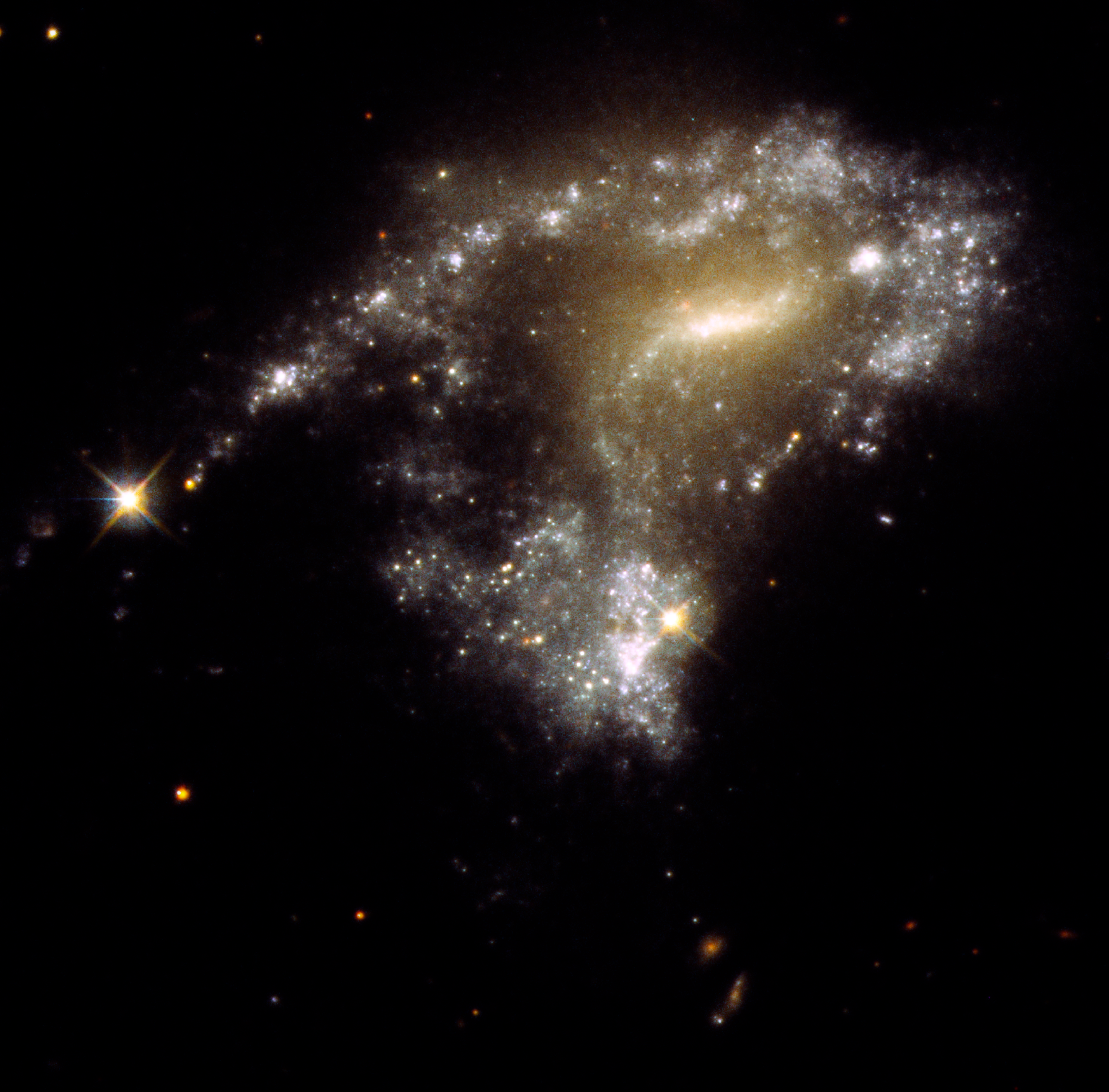YSU professor studying galaxy collisions with Hubble Space Telescope

Patrick Durrell, distinguished professor of Astronomy at Youngstown State University in the department of Physics, Astronomy, Geology and Environmental Sciences, is part of a research team that used images from NASA’s Hubble Space Telescope to study a multitude of young clusters of stars that formed in the aftermath of galaxy mergers or collisions.
"These galaxy mergers or collisions happen more often than people might think," said Durrell.
The recently published study featured analyses of 12 tidal tails in seven different interacting galaxies and one system, AM1054-325, is featured in a new color image release from the Space Telescope Science Institute in Baltimore, Maryland.
Using the advanced imaging capabilities of the Hubble Space Telescope, Durrell along with the research team of astronomers used new and archival Hubble images in optical and ultraviolet light to study young star clusters that formed within the long tidal ‘tails’ that form as a result of galaxies that interact, collide and, in some cases, merge. Large clusters of stars can form when the gas in the tidal streamers collide.
“The addition of new images taken through ultraviolet filters really helped with the detection and age determination of the star clusters that formed in the wake of the galaxy collisions,” said Durrell.
The research found that these clusters are very young — only 10 to 100 million years old and they seem to be forming at the same rate along tails stretching for thousands of light-years.
Durrell has worked with this team for over 15 years collaborating on various projects. He contributed to this project from the start, responsible for overseeing the technical planning of the Hubble Space Telescope observations. Additionally, he participated in the photometric analyses of the brightnesses and colors of over 400 star clusters found in the tidal debris.
The Hubble Space Telescope is a project of international cooperation between NASA and ESA. NASA's Goddard Space Flight Center in Greenbelt, Maryland, manages the telescope. The Space Telescope Science Institute (STScI) in Baltimore, Maryland, conducts Hubble and Webb science operations. STScI is operated for NASA by the Association of Universities for Research in Astronomy, in Washington, D.C.
